Little Shag - Cormorant
The Little Shag species, Kawau Paka (Phalacrocorax melanoleucos), really is quite small in comparison to other shag species in New Zealand. This species has a range of plumage colours that sometimes can make them appear to be several different species when in fact they are the same.
Little Shag, Kawau Paka (Phalacrocorax melanoleucos), Little Cormorant, New Zealand
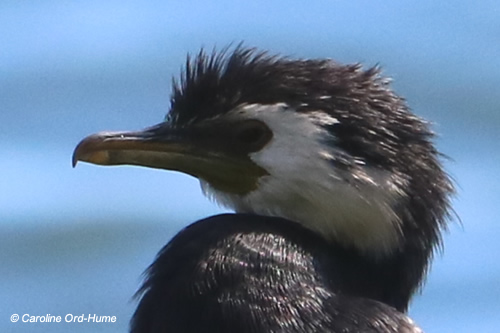
Find out more about these fascinating shags/cormorants including different names they are called, their distribution across NZ, how to identify them, what they eat, and any conservation issues that apply to their continued survival.
Black Fronted Little Shag, Kawau Paka, Tauranga Harbour Estuary, North Island, New Zealand
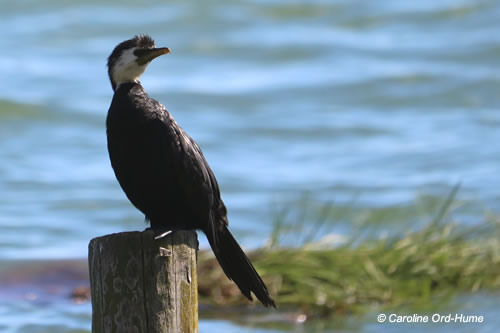
Little Shag (Phalacrocorax melanoleucos). Family: Phalacrocoracidae
This small shag species is known by various names, most of which refer to their small size; Little Shag, Kawau Paka, Little Cormorant, White-throated Shag, Little Pied Shag, and Little Pied Cormorant.
Out of three subspecies recognised, the New Zealand Little Shag is brevirostris. This subspecies has different forms of plumage and they interbreed irrelevant of plumage.
Habitat and Distribution
Little Shags are the most widely distributed of the New Zealand shag species with habitats that include marine water, freshwater, lakes, ponds, rivers, and streams, on the coast and inland, sometimes in quite shallow water.
Little Shag, Kawau Paka (Phalacrocorax melanoleucos), catching and swallowing an eel in the estuary waters by Takitimu Drive Walkway, Tauranga, North Island, New Zealand
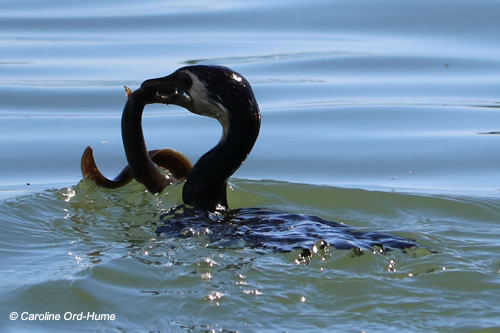
Little Shag Description and Identification
Black and White Fronted Little Shag, Kawau Paka, Napier Harbour Estuary, North Island, New Zealand
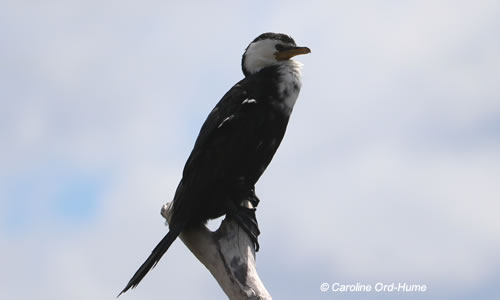
Little Shags have the most variable plumage of all the New Zealand shag species with face, throat, breast, and underbelly feathers ranging from black through to white and variations of partial colours in between.
The differences in plumage are demonstrated here through the images of black fronted, white fronted, and black and white fronted Little Shags, some with mottled feathers.
2 Black and White Fronted Little Pied Shags, Kawau Paka, Napier, New Zealand
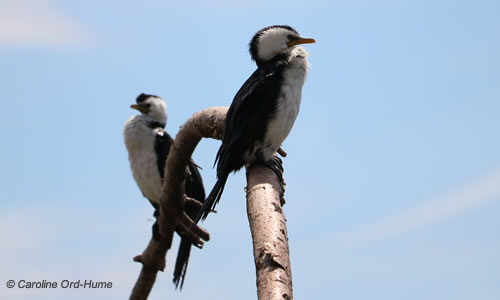
Although identification can be a challenge when going by plumage colours, once an observer becomes familiar with the Little Shag’s short yellow bill, long tail, brown eyes, yellow skin on the face, and black legs and feet, its shape is enough to be able to identify the species.
Diet
You will usually see Little Shags hunting diving for food alone. Their diet consists of small size fish, eels which they sometimes have quite a struggle to swallow (see image of shag eating an eel), crustaceans, and then they may also eat insects, tadpoles, and frogs.
Conservation
Little Shags are now considered to be ‘not threatened’; although before 2013 they were considered to be at risk their status changed at that time. It is estimated that there is between 5,000 and 10,000 breeding pairs across New Zealand but the accuracy of that estimate is currently unknown.
Threats to survival of this species is generally the same as most of the other shags in NZ such as getting caught in fishing nets and tackle, whether recreational or commercial, and loose dog attacks.
Little shags do also suffer from theft of their nests, or should I say takeover of their nests, by larger shags such as Pied Shags.
Shag Species
List of New Zealand shags / cormorants species.
Birds and wildlife in NZ...
List of native New Zealand bird species and a list of wild animals in and around New Zealand